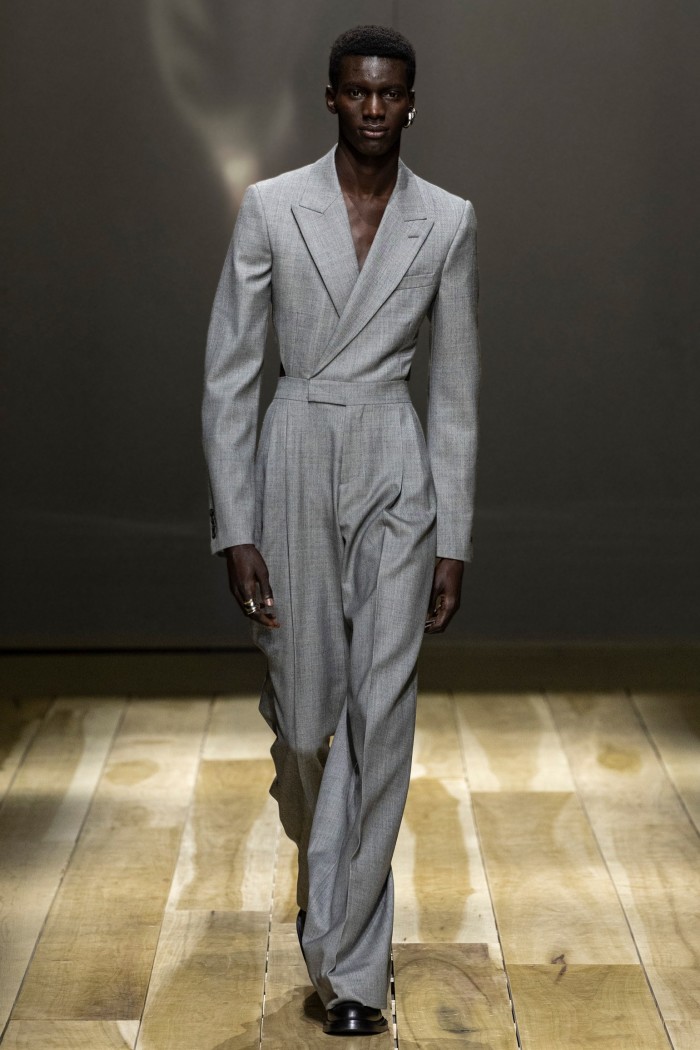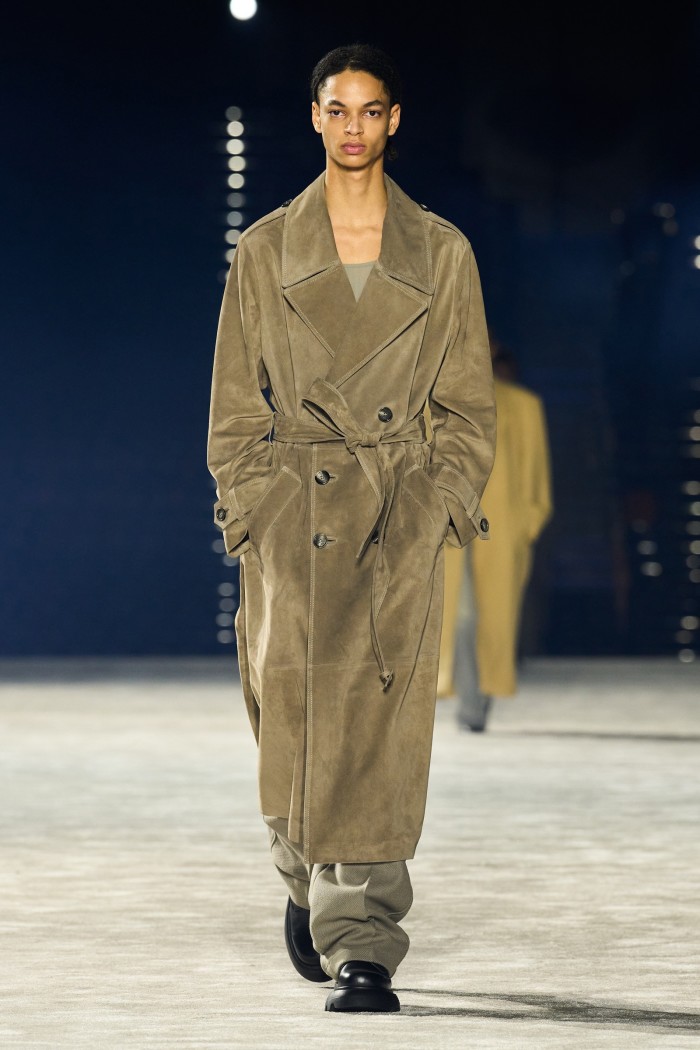How fashion got stuck in the Waugh zone

Roula Khalaf, Editor of the FT, selects her favourite stories in this weekly newsletter.
This season, menswear has embraced the gimlet-tinged mood of Cecil Beaton’s diaries, the roman à clefs of Evelyn Waugh and Nancy Mitford, and the posturing of their 1920s peers. You can see it in the lace and exaggerated puffed sleeves at Simone Rocha, the Genet-like Marseille sailors at SS Daley and the flamboyant tailoring at McQueen and Peter Do. Most of Dries Van Noten’s collections feature pyjama silks that Beaton’s subjects would have loved. A$AP Rocky wears pearls and Kieran Culkin favours multicoloured nail varnish and wrists full of beads.

Fashion has frequently revisited the 1920s and the so-called Bright Young Things, as documented by Beaton, Mitford, Waugh, and the tabloids of the day. “Those androgynous, luxurious and often queer-coded self-representations resonate with today’s menswear designers,” says Jay McCauley Bowstead, lecturer in cultural and historical studies at the London College of Fashion, and author of Menswear Revolution: The Transformation of Contemporary Men’s Fashion. “The famous Cecil Beaton photograph from 1927 of Stephen Tennant, Rex Whistler and the Jungman sisters dressed in a joyous simulacrum of 18th-century dress in Tennant’s garden in Wiltshire comes to mind.”


Many of the trend’s references come from retro, upper-class, public-school apparel. In May, the American brand Rowing Blazers created a capsule collection for Gucci Vault of rugby shirts and tailcoats using fancy coloured edging, while its other collections incorporate cable-knit cricket sweaters and poolside blazers in terrycloth. Botter, with its “Caribbean couture” rugby shirts and crewneck sweaters sewn onto the front of turtlenecks, gives the Bright Young Things aesthetic a refreshingly diverse twist.
The sometime artist and full-time procrastinating author Stephen Tennant remains a key influence for many designers, just as he influenced the fashions of the time. Everything had to be a statement, and something worth diarising. Philip Hoare’s biography of the writer, Serious Pleasures, describes Tennant as having “long fine limbs and a graceful gait”, resembling “a whitened stick insect stalking his way through the crackly black and white film”. The book (and therefore Tennant) has inspired both Luke Edward Hall’s Chateau Orlando clothing brand – which often features vests, polos and camp collar shirts – and many of his works on paper.


Rowing Blazers x Gucci vault wool tailcoat, £1,130

Dries Van Noten Twill shirt, £650, mrporter.com
Tennant was extravagant with money and blew fortunes on swish tailoring. He also enjoyed a lengthy love affair with the poet Siegfried Sassoon. While reading about them gallivanting across Europe, you can imagine the pair wrapped up in this season’s voluminous belted trench coats from Ami, billowing over Oxford bags.
On the contrary, the late Savile Row tailor Edward Sexton took inspiration from the Hollywood glamour of the ’20s, rather than the Bright Young Things: squarer shoulders and shorter jackets grounded the silhouette, influenced by the long, classically elegant lines of art deco.

If Sexton’s tailoring, which is being carried on by his team, is the PG Wodehouse of the fashion world, then John Alexander Skelton is the DH Lawrence, with his handwoven wool waistcoats and broad trouser legs – in the spirit of the gamekeeper rather than the toff. Both labels occupy a similar space, in that they offer statement tailoring rather than sportswear. And an increasing number of men want to make that statement. “Our buy in suiting is up 208 per cent,” says Damian Paul, head of menswear at MatchesFashion, “and many of these classic styles mirror the tailoring of the 1920s – from tailored pants, a neat shirt and a tie to double-breasted suiting and belted overcoats.”


Bosse Myhr, director of menswear at Selfridges, says his store’s buy for tailoring has also increased around 75 per cent: “The 1920s influence is visible in the peak-lapel dinner jackets at Ferragamo and raw trim teal wool suiting at Bianca Saunders, styled with a nipped-at-the-waist luxe satin shirt. Styles evocative of the era are also found at Jacquemus, Loewe and Wales Bonner.” While a lot of this is about play and escapism, it’s that word “elegant” that keeps occurring. When Tennant and Beaton et al were having their elaborate costume parties, elegance as much as decadence was everything.

The collection that perhaps best sums up this 1920s resurgence is Saint Laurent’s AW23 menswear. “That collection has a wistful tendency expressed in oversized asymmetric bows tied at the throat like exaggerated Regency cravats, stacked-heel patent leather boots, and open shawl-collar satin and chiffon shirts,” says McCauley Bowstead. “But there’s also a hard ’70s countercultural fetishistic feel to it with its angular shoulders, military greatcoats and leather trousers. It represents an elegant vision of male beauty in which dress becomes a site of imagination and transformation.” And that’s the power of clothing – it can take you back in time or into the future. It can be 1920 or 2120. And who doesn’t want to be a bright young thing?
Comments